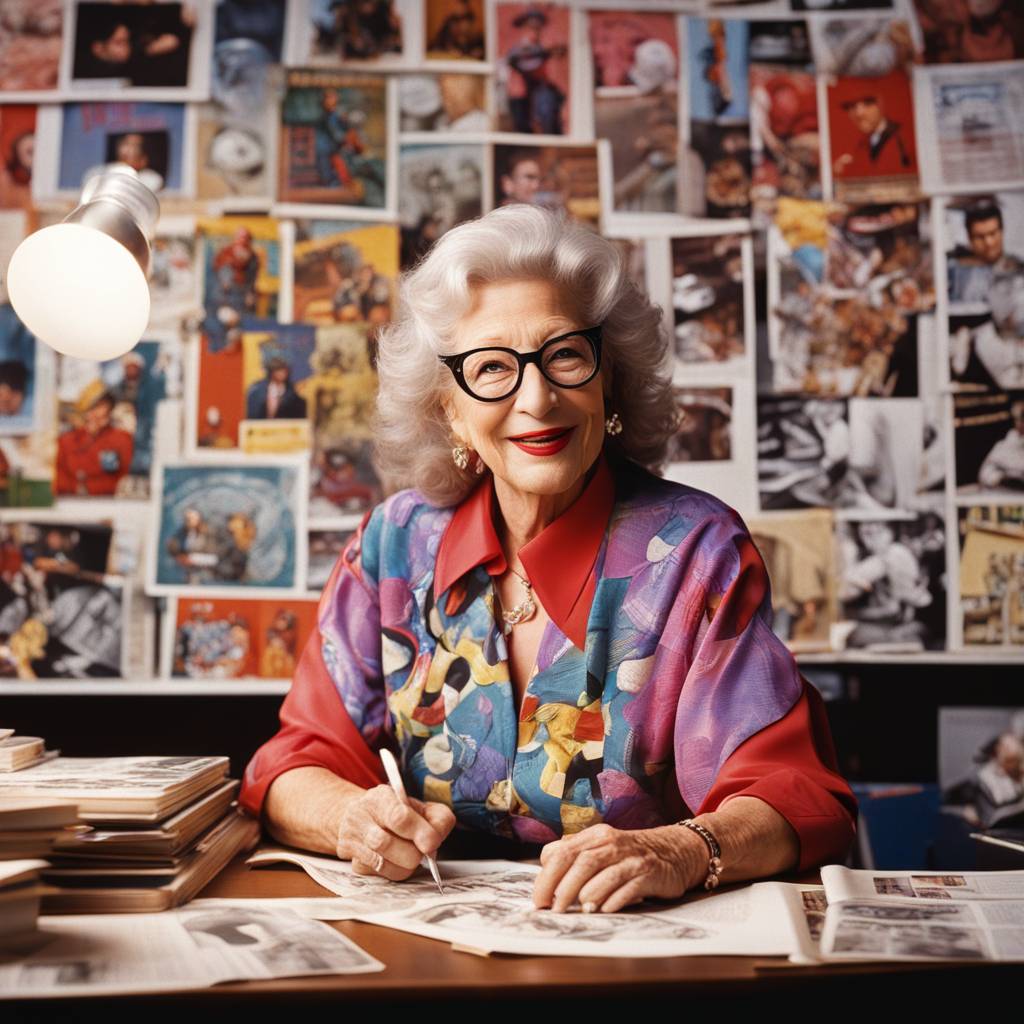Trina Robbins, a pioneering underground cartoonist, began her career in the early 1960s after moving to Los Angeles from Queens College. Initially hoping to break into the movie industry, she found herself creating and selling dresses at craft and Renaissance fairs. However, her interest in comics was piqued when she discovered the surreal comic strips in The East Village Other, leading her to create a one-panel cartoon about a teenage hippie named Suzi Slumgoddess. To her surprise, the cartoon was published, marking the start of her career as an underground cartoonist.
As Robbins delved further into the world of underground comics, she became a regular contributor to The East Village Other, using her comic strips as advertisements for her clothing boutique, Broccoli. Her unique style, reminiscent of paper dolls, contrasted with the taboo-breaking subject matter of her strips, such as a comic about having sex with a lion. Despite her playful approach to sex in her comics, she faced backlash from male cartoonists who were threatened by her feminist perspective. Robbins also expressed her distaste for the dark and violent content in Robert Crumb’s comics, noting that she found it misogynistic and unfunny.
Robbins’ contributions to the underground comics scene were groundbreaking and challenged traditional gender roles and societal norms. Her work often featured strong, empowered female characters and explored themes of sexuality and feminism. While she faced criticism and resistance from some male cartoonists, Robbins remained true to her vision and continued to create provocative and thought-provoking comics. Her willingness to push boundaries and challenge the status quo cemented her legacy as a trailblazer in the world of underground comics.
Throughout her career, Robbins continued to explore new avenues of creativity and expression. She was a versatile artist, creating a wide range of comic strips and illustrations that reflected her unique perspective and artistic vision. Her work resonated with a diverse audience and sparked important conversations about gender, sexuality, and feminism in the male-dominated world of underground comics. Despite facing challenges and opposition, Robbins remained committed to her craft and left a lasting impact on the underground comics scene.
In addition to her contributions to the world of underground comics, Robbins was also a prolific author and historian. She wrote several books on the history of women in comics and worked tirelessly to elevate the voices of women artists in a male-dominated industry. Her advocacy for gender equality and representation in comics helped pave the way for future generations of female artists and creators. Trina Robbins’ legacy as a pioneering underground cartoonist and feminist trailblazer continues to inspire and empower women in the world of comics and beyond.
Overall, Trina Robbins’ career as an underground cartoonist was marked by creativity, innovation, and a fearless commitment to pushing boundaries. Her work challenged traditional norms and stereotypes, creating space for female voices and perspectives in the male-dominated world of comics. Through her provocative and thought-provoking comics, Robbins paved the way for future generations of female artists to express themselves and make their mark on the industry. Her legacy as a trailblazer and feminist icon continues to inspire and empower women in the world of comics and beyond.








